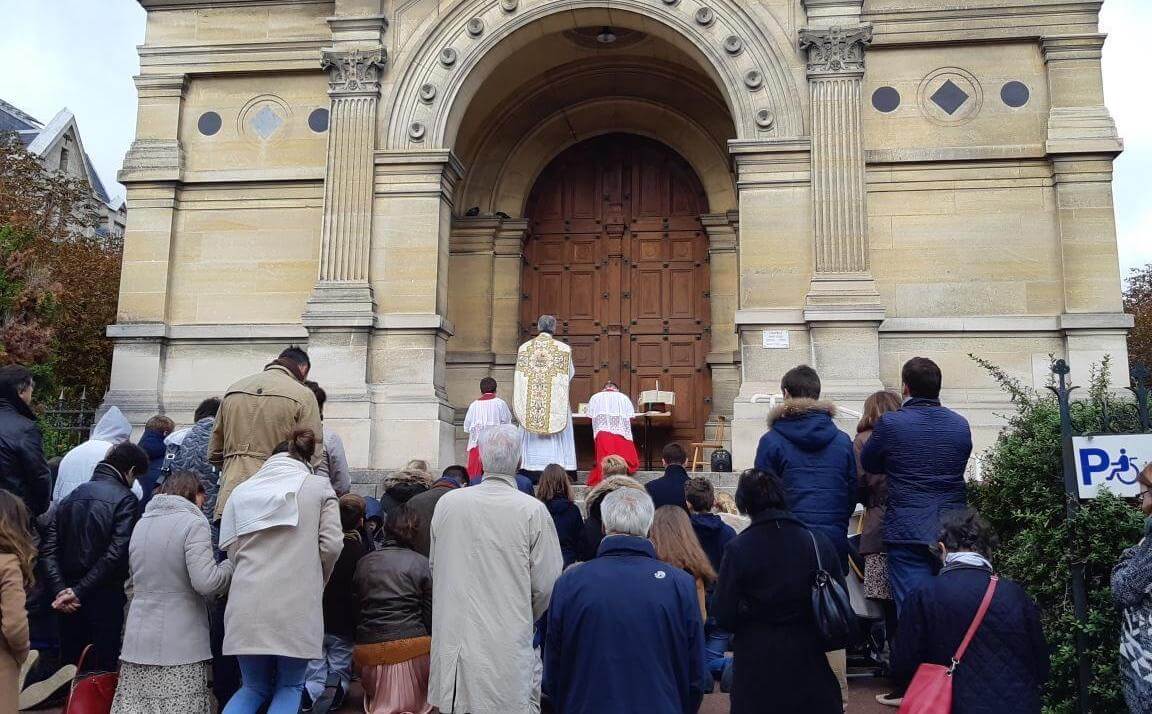(Editor’s Note: This is Part III of a three-part series: “Leading a Traditional Catholic Life in a Time of Civil War.” Part I can be found here, and Part II can be found here.)
In the first part, I spoke of how easy it would be to get discouraged by the renewed assault on the traditional Catholic Faith, and how much we can benefit from learning about the example of the first wave of traditionalists who kept the Latin Mass alive in what were truly the darkest days. In the second part, I spoke of the dangers we face—especially the most subtle danger, our own softness, a side-effect of fourteen years of (relative) liturgical peace. The sudden shift of papal policy has caught many unprepared and, to that extent, easy targets for soi-disant “Catholic apologists” who try to ram an indigestible version of “papal infallibility” down every throat within reach. To react appropriately, we need to make time for prayer, for study, and for action.
I’d like to begin with a piece of simple advice. (It’s one that I’ve had to give myself more than once.) Pace yourself and don’t burn out. The problems the pope unleashed with Traditionis Custodes could take anywhere from fourteen months to fourteen years to resolve—we simply don’t know. As in any great war (think of World War I or II), there will be many individual battles, some of which we will win, some lose.
Don’t panic at this or that turn of events. Remember that we are all together in this war to the end, when Tradition is assured of victory by divine assistance. The attempted substitute for Christianity—what Fr. John Hunwicke calls “Bergoglianity”—cares nothing for tradition, but it is doomed to fail like all merely human constructs. So we can afford to take time to pray, to think, to prepare, to strategize, to network, to carry out small-scale and large-scale operations, and then to pray more.
The injustice inflicted on the Church must be protested and fought against in every morally permissible way, while we continue to nourish ourselves on the riches available to us—some of which, like the traditional Divine Office, can never be taken away by any power on earth.
Let’s begin with prayer. First, continue to assist at the Latin Mass, wherever and whenever you can. If your nearby option has been erased from the map, it may take more driving. I know families for whom the long trek to the Latin Mass has become an opportunity for conversation, listening to talks or good music, praying, or making time for a chunk of good spiritual reading. Or some of each. And it demonstrates what we hold most dear.
Acquire helpful aids for passing on the Faith in family customs and lessons. Sophia Institute’s Benedictus—a subscription-based monthly publication with Mass propers, meditations, daily prayers, and articles for every day of the month—could make a perfect devotional backbone for your home. Sophia will soon be coming out with deluxe full-color poster-sized Latin Mass calendars, illuminated in a medieval style, that will quickly become a cherished and practical means of living in accord with the liturgical year.
Ask sympathetic priests to have your children baptized in the old rite. Seek out the possibility of traditional Confirmation. No formal attempt has been made to control such things. If and when that happens, new solutions will be found.
Start to pray some portion of the traditional Divine Office. The Breviarium Romanum is pricey if you buy the complete three-volume set but Angelus Press offers excerpts: Vespers, Compline, and a selection they call Divine Office. (Note that the complete Brevarium Romanum is available, in Latin and English side-by-side, at https://divinumofficium.com.) The Monastic Diurnal, containing the day hours according to the Holy Rule of St. Benedict, is much more affordable (that’s what I use as an oblate). The Little Office of the Blessed Virgin Mary is another solid option. A good strategy for beginners is to start with the office of Prime, and to follow it up with the daily reading from the Roman Martyrology, an inspiring reminder of the triumph of God’s grace in the midst of the most excruciating trials. Any of these traditional office books is vastly superior to the Liturgy of the Hours, which was ruined even more extensively in the liturgical reform than the Mass itself was. An old office book will include the imprecatory or cursing verses of the Psalms, which were surgically removed from the Liturgy of the Hours, as if God had made a mistake when He provided these prayers for Israel and the Church. When we pray these potent words in union with the saints of all ages, the Lord will not only understand their correct meaning but will know, unerringly, how to fulfill them.
For days when the Mass of Ages is unavailable, learn how to pray a “dry Mass” at home, either as a method of personal prayer or as a family devotion. If Adoration is available in your neighborhood, make Holy Hours for the restoration of tradition, the renewal of the Church’s hierarchy in faith and holiness, and in reparation for blasphemies and sacrileges against the Most Holy Eucharist. Pray the family Rosary, perhaps accompanied by brief meditations (of which this would be an example).
The following “Prayer for the Traditional Movement” could be used from time to time:
O Lord, remember in Thy Kingdom N. and N. [names of individuals or communities], and all religious, clergy, and laity throughout the world who are dedicated or drawn to the venerable rites of Rome. Bless us, govern us, defend us, purify us, and multiply us for the good of souls, for the restoration of Thy Church, and for the glory of Thy Holy Name. Amen.
Those who cannot get to a traditional Latin Mass within a reasonable driving distance should seek out an Eastern Catholic parish or an Anglican Ordinariate parish. Since the Vatican has said more than once that attendance at SSPX chapels is permissible, that would be an option in a place where diocesan traditional Masses have been removed or never provided.
After prayer, the next most important thing is that we do some studying of the traditional Faith. The Latin Mass, together with the entire sacramental-mystical-cultural life of which it is the center, is something rich, profound, and subtle. While many of its benefits are obvious, others take time to appreciate—and when we feed our minds with the best books on the subject, we learn to see and hear so much more, and we learn how to explain and defend what we love. For fourteen years we’ve often been content to let tradition speak for itself (and it was definitely working, as the rising attendance at the TLM shows), but now that it’s under frontal attack and the papalist posse is hurling accusations of “disobedience,” “private judgment,” and the like, we need to step up the intellectual component.
There are so many worthwhile books that this could quickly turn into a gigantic (and, for that reason, intimidating) list. And, as it happens, such a list has already been published at OnePeterFive. Here, I’d like to mention just a few titles that are especially valuable for tradition-loving Catholics at this juncture:
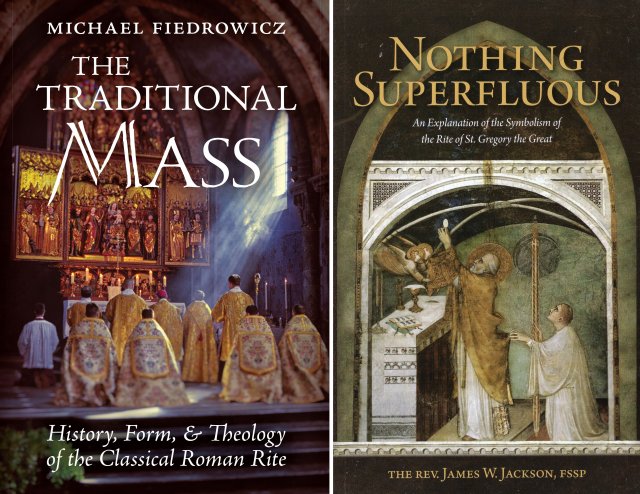
#1. Michael Fiedrowicz’s The Traditional Mass: History, Form, and Theology of the Classical Roman Rite. The best book to read, bar none, on just what its subtitle says. If you want an accessible and intellectually bulletproof case that what we call the “Tridentine Mass” is the fairest flowering of a continuous development in Roman Catholic tradition and that St. Pius V did not “create a new missal” after Trent, this would be it. It’s a joy to read, with fresh discoveries to make on every page. It’s so good, in fact, that the Priestly Fraternity of St. Peter has adopted it as a main course book for their liturgy studies. The special virtue of this book is that it takes you first through the wonderful ways by which Providence built up our Mass, then examines the function, rationale, and symbolism of each of its major parts and aspects, and finally sets forth the divine wisdom contained in the missal, contrasting it with the defective lex orandi of the Novus Ordo. A tour de force!
#2. Fr. James Jackson’s Nothing Superfluous: An Explanation of the Symbolism of the Rite of St. Gregory the Great is a running commentary on the parts, prayers, objects, and actions of the traditional Latin Mass. Fr. Jackson appreciates that the Mass as a “poem,” the greatest poem our world has ever seen, a poem written by our Lord Jesus Christ and the Holy Spirit over the course of twenty centuries. He brings out the drama of the liturgy as a solemn re-presentation of the sacred mysteries of the life, death, and resurrection of Our Lord and a participation in their inexhaustible dynamism. The traditional Mass is not simply holy (although it is that, to the maximum degree); it is not simply doctrinally pure, ample, and trustworthy (for it is that, too, without a doubt); it is above all beautiful, orderly, and harmonious, elevating the senses, the imagination, the memory, the intellect, the will above themselves and into the precincts of the heavenly Jerusalem. After reading Nothing Superfluous, you will never think about or encounter the Mass in quite the same way. This book, which is more devotional and poetic, very nicely complements the historical and doctrinal angle of Fiedrowicz.
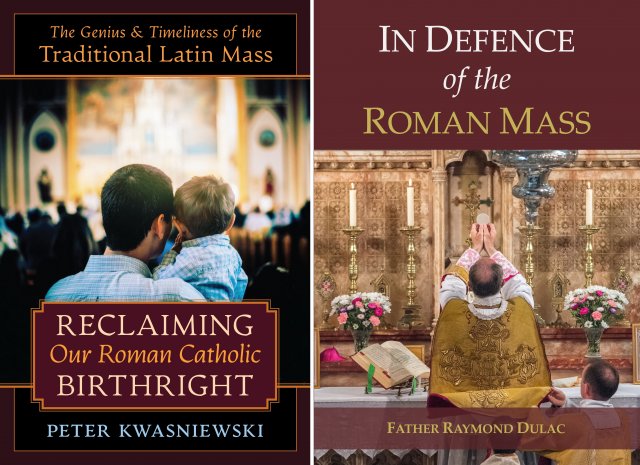
#3. The fruit of thirty years of experiencing, studying, and thinking, my book Reclaiming Our Roman Catholic Birthright: The Genius and Timeliness of the Traditional Latin Mass was written as the ultimate “apologetics manual” for the TLM, equipping its proponents with arguments, and responding to every objection one is likely to hear. Since liturgical knowledge among the general Catholic population is at an all-time low, I take pains to explain my terms (hence the Glossary) and try to avoid “inside baseball.” While the focus is on the Mass, there are frequent mentions of the other sacramental rites, the Divine Office, blessings and exorcisms, and, in general, the entire “shape” of traditional Catholic life, which follows the great law: lex orandi, lex credendi, lex vivendi. The book therefore engages the entire problem of Vatican II’s aggiornamento and how it soured into desacralization and secularization. The book is also intended to be concrete and practical. For example, chapter 2 sums up why the TLM “is the way it is”… how it “works” for God’s glory and our sanctification… and why it will always work; chapter 3 explains various ways of participating fruitfully in the traditional Mass; chapters 17–20 are directed to parents, telling them why the TLM is so important for forming the minds and hearts of children, and delving into how parents can assist their children in assimilating its riches; and chapter 22 talks about why those who are pro-life should also be pro-tradition.
#4. Fr. Raymond Dulac, In Defence of the Roman Mass. This valuable collection brings together the best of Fr. Dulac’s pugnacious and persuasive articles from the period 1967–1972, penned in defense of the superiority of the traditional missal and the perpetual right of priests to avail themselves of it. According to this canon lawyer, the classical Roman Rite was not forbidden and cannot be forbidden—a judgment on which he was vindicated decades later by Benedict XVI. I recommend this book precisely because it comes from the first tempestuous years of the imposition of the Novus Ordo Missae, which was resisted by keen intellects and great Catholic hearts like Fr. Dulac’s. Since the motto of Francis’s pontificate seems to be “Back to the 70s!,” the best writing from that period speaks directly to our present situation, when the pope is attempting once more to say there is only one “Roman rite,” the modern rite of Paul VI.
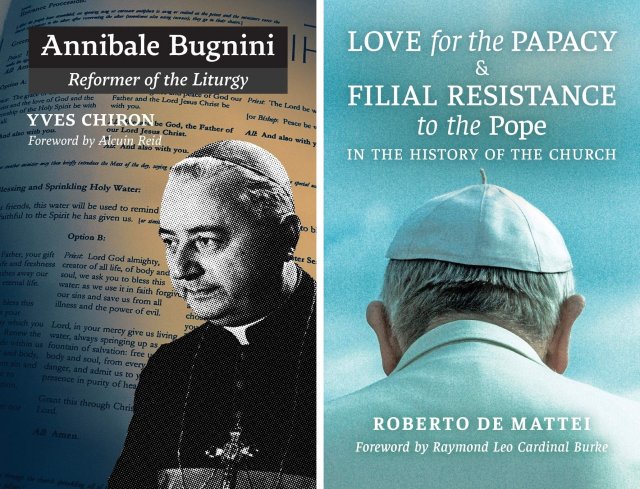
#5. Yves Chiron, Annibale Bugnini, Reformer of the Liturgy. Those who have heard of Bugnini tend to think of him either as an evil scheming Freemason bent on the destruction of the Catholic Faith or as a highly talented bureaucrat who smoothly guided a complex liturgical reform to its happy conclusion. The former view is debatable and the latter view is plain silly. This well-researched yet mercifully compact biography portrays a more complex and human figure, driven by rationalist and pastoralist theories about how liturgy should be, but running against opposition that eventually led to his expulsion. In relating the life and work of a man who was singularly influential in the unprecedented rewriting of the totality of Roman Catholic worship, Chiron simultaneously summarizes the twentieth-century liturgical reform, pope by pope, committee by committee, book by book. It is truly one of the most astonishing—and disturbing—stories in the history of Catholicism. As we learn more about how the “new and improved” sausage was made, the ingredients put into it and the people working in the factory, we have ever more reason to say “no thanks, I don’t want any of it.”
#6. Roberto De Mattei’s Love for the Papacy and Filial Resistance to the Pope in the History of the Church. Given our circumstances, we need to know about cases where popes have messed up, doctrinally or prudentially, and were legitimately resisted by members of the Church. It is comforting—in both the current meaning of the word (consoling, reassuring) and its old-fashioned sense (strengthening, galvanizing)—to know that there are precedents for such resistance, and to know what they looked like. Divine Providence raises the right people at the right moment.
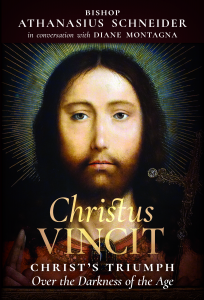
#7. Bishop Athanasius Schneider’s Christus Vincit: Christ’s Triumph Over the Darkness of the Age. When people ask me: “What should I read to understand the current crisis in the Church, how we got here, and how we get out of it?,” I always recommend this book, which is written with the clarity, fortitude, kindness, and orthodoxy for which Bishop Schneider is famous (and which we saw once again on display in his reaction to the motu proprio).
Those who would like ideas for further reading will find, at the back of my book Reclaiming Our Roman Catholic Birthright, a “Select Bibliography” organized into seven categories: General; Missals or Guides; For Younger Readers; Liturgical Theology; History; Fiction; Online Resources.
I’d like to echo a recent statement of Dr. Joseph Shaw: “The best way to respond to Traditionis Custodes is to carry on with the work of restoring Tradition.” He goes on to talk about altar server training and mending vestments.
Get personally involved, to the extent possible, in your TLM community and help build it up through social, cultural, and educational events. We need one another like never before, and we need opportunities for our families to interact.
Write positive and respectful letters to your bishop and the tradition-friendly priests in your diocese. Tell them how much you love the Latin Mass, and why; how it has led you to a deeper life of prayer; how it has brought you neared to Jesus in the Most Holy Eucharist; how it has helped your family, your children, your spouse; how it has helped you build community with other families; the corporal or spiritual works of mercy to which it has given rise. Tell them that you know converts or reverts who have been brought back to the Faith by the ancient liturgy.
Bishops need to hear this, they need to be reminded of the countless good fruits Benedict XVI’s wise policy allowed to flourish. Priests, too, need to hear from the faithful. Knowing the needs and support and gratitude of the people of God strengthens them in their hour of trial and invigorates them to keep working toward having the Latin Mass back again, or building it up stronger where it still exists. It also makes it more likely that they will do the right thing when worse comes to worst.
(I do not recommend writing to the pope, because he gets a lot of letters he never looks at, and he is totally unsympathetic to you. In fact, he hates your traditionalism, so lots of letters, if he noticed them, would only confirm his prejudices. Devote your efforts to the local scene—the diocesan or regional scene.)
Has your bishop forbidden the Latin Mass? Take a cue from the French traditionalists: gather together a couple of hundred people (or even more, if you can organize it) and march up to the bishop’s house or office, and stay there for a while, singing chants, praying the Rosary, peacefully witnessing with placards. Ask him to come out and talk to you. Do not yell or threaten. Show him that you exist and that you will never stop asking for the traditional worship of the Church. It may also be possible to offer the Holy Mass outdoors, in public squares, in parking lots, in front of closed churches—as in the main photo of this article, showing the faithful of Saint-Germain-en-Laye having Mass outside a church that had been locked against them.
Make your donations count. Do not give a penny to any diocese that does not expressly support the TLM. Support the individuals, monasteries, communities, and societies that keep it alive and bring it to us. If you know “canceled” priests, invite them to your house to say Mass. Catholics around the world have begun to build home chapels for the days of recusancy that may be ahead. Support these priests with your friendship, meals, and aid.
Lastly, I will echo what Fr. Zuhlsdorf has said so often at his blog: traditional Catholics have every reason to get involved in spiritual and corporal works of mercy, in concrete works of charity. We already do a lot in the pro-life area but there are other opportunities we can take advantage of in our locales. Let it never be said (at least, by honest people) that “Latin Mass Catholics” are “only interested in the liturgy and not in helping others.” Any spouses with a large family to take care of are already giving to the world a beautiful image of Christ and the Church, a supreme witness of charity, and a heroic response to God’s call; but many of us, to be sure, could be doing more than we are doing in the non-liturgical sphere.
If we take all the categories—prayer, study, action—and all the suggestions in each one, that’s an awful lot, and may seem overwhelming. But I’m not saying everyone has to do everything, and certainly not all at once. As the Chinese saying goes, a journey of a thousand miles begins with a single step. Make your prayer life more central, one little step at a time. Make room for a bit of study, five or ten pages at a time. Make a bit more room for activities with like-minded fellow Catholics. We will find that, as months and years pass, our faith and hope and love will grow stronger, and so will our ability to respond to the crisis in the Church.
“Know that the Lord has set apart the godly for himself; the Lord hears when I call to him. Be angry, and do not sin… Offer right sacrifices, and put your trust in the Lord… In peace I will both lie down and sleep; for you alone, O Lord, make me dwell in safety” (Ps 4).

